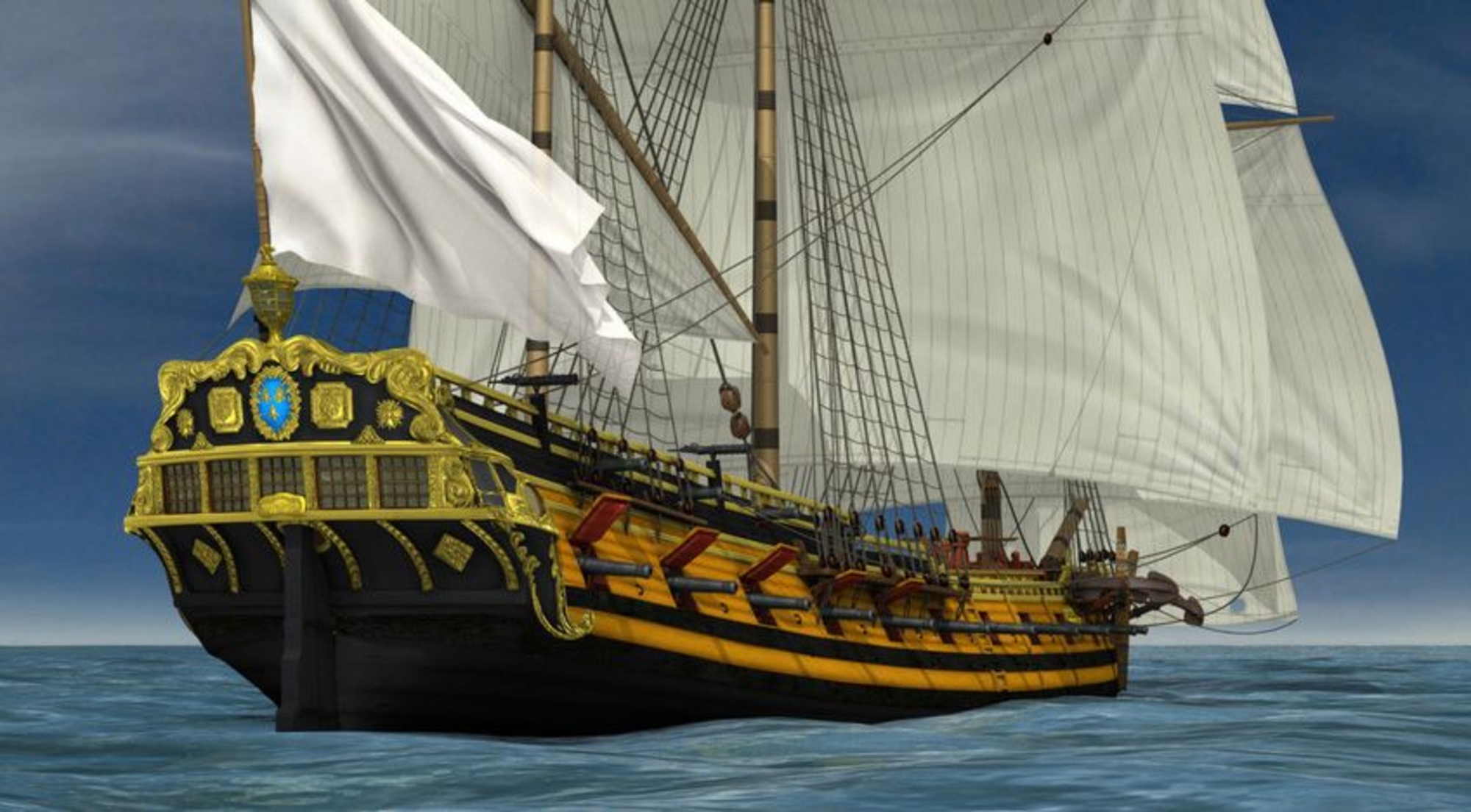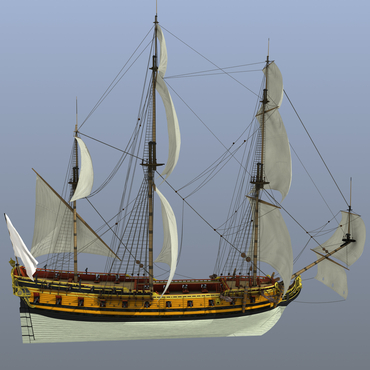
- Home
- Shipbuilding
- The structure of the Dauphine
Reconstructing a ship based on archaeological remains is slow, painstaking work. This was certainly true for the Dauphine; only the bottom and starboard side of the ship survived, and the aft part had disappeared entirely. In addition, what remained had been deformed by its long stay beneath the waters of the harbour, beneath the combined weight of cargo, cannons and sediment. However, reconstruction work was greatly facilitated by knowing the type of structure, its architectural heritage and the period in which it was built: every tradition (and every shipbuilder) had its own rules and methods of design and construction.
The first task was to calculate the primary dimensions of the original ship, including:
- The tread of the keel (its length along a straight line)
- The length between stem to stern
- The maximum beam
- The depth (the vertical distance from the top of the keel to the underside of the upper deck at side)
The attempt to establish these dimensions was based on careful comparison of the remains of the hull with archival information for similar vessels – plans of light frigates from the late 17th and early 18th centuries. The keel length and the length between perpendiculars were determined thanks to the position of the main-frame and the main mast step – the position of these elements is unfailingly based on precise rules. For the Dauphine, we were thus able to determine that, in all likelihood, that the length between perpendiculars was originally 104 pieds, or 33.77 metres.

